The Maltipoo dog is a mixed breed of a Poodle and a Maltese. They might be easily mistaken by the adorable Cavipoo, but they are their own unique brand of fun and beauty!
They come in many different sizes depending on their own personal growth, and they are pretty smart. The great thing about them too is that they are hypoallergenic balls of fun with just the most adorable non-shedding fur.
Their amazing curly or wavy coats come in many different eye-catching colors, so you might be wondering what kind of colors these designer dogs can come in.
After all, color can be quite important when it comes to discerning between a purebred Maltipoo and another pup—although they might be equally adorable!
There are many different colors out there—white, black, parti colors, to name a few. But you might be wondering what color of Maltipoo you want when you go to a Maltipoo breeder. Is there anything you should be looking for in particular?
Also is there something that you should know when it comes to health or behavior when it comes to color?
In this article, we will share everything you need to know about Maltipoo colors as well as coat patterns and what they can mean for you and your doggo!
Let’s jump right into the myriad of Maltipoo colors!
What Are The Most Common Maltipoo Colors?

So you might be wondering what are the most common colors that can be found in this pup that has just the most soft fur ever!
What would be the breed standard?
The Maltipoo is not recognized officially by the American Kennel Club (also known as the AKC), so there is not really a ready way to answer this question.
According to the American Kennel Club (the AKC), the Maltese–one of the parents of the beautiful Maltipoo–may have a variety of coat colors, such as plain white, white with tan, or white with lemon.
The AKC standard for Poodles is a bit different, since Poodles come in a greater variety such as beige, black, apricot, white, red, cream, brown, and gray.
Because the Maltipoo is a blend of these two adorable puppies, you can expect the range of color to fall into one of these two categories.
So you might now wonder…
What Color Do Maltipoos Generally Come In?
The Maltipoo can fall into quite a range, but most commonly are found in white, tan, coffee, apricot, black, cafe au lait, red, and silver/silver beige.
Most Maltipoos, however, can be found in white or cream.
You can also find many parti Maltipoos , which just means that these cuties can be found to have two-color coats.
Just imagine the amazing Maltipoo haircuts you can make with such a variety of colors that the Maltipoo can offer!
Down below we will discuss some of the most interesting Maltipoo colors out there.
The White Maltipoo
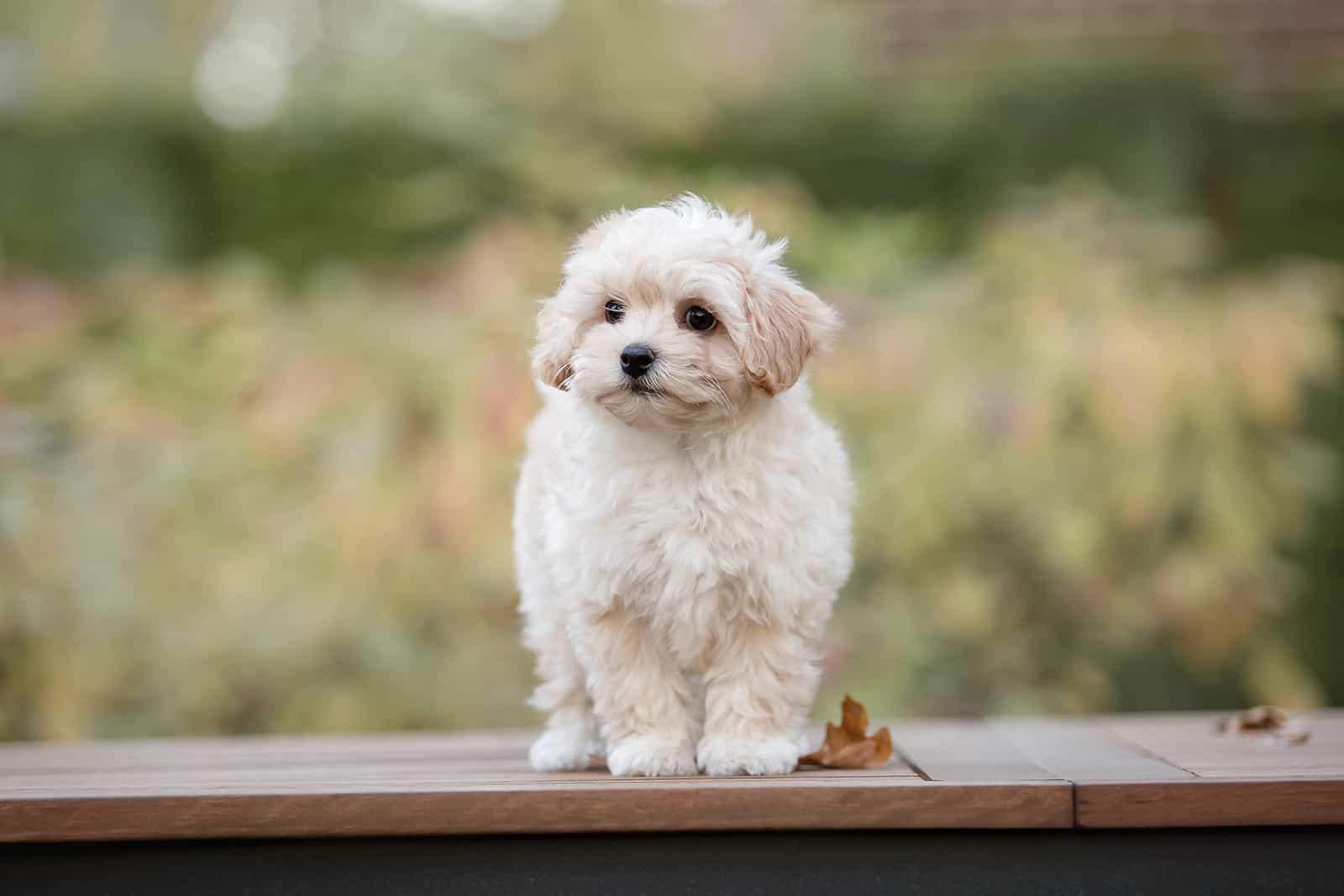
The Samoyed is not the only pup that comes in the beautiful white color!
Like we have imagined, the white Maltipoo is the most popular pup you can find among this breed. The white color is what comes to mind when most people think of the Maltipoo, particularly since it is such a common color for Poodles as well.
The genes of the white-color coat run deep, and you can count on them expressing themselves quite often.
What people may not know is that Maltipoos might also completely lack certain cells in the skin responsible for pigmentation if they have a white coat.
So, when you purchase or adopt your pup from a breeder, you can expect your Maltipoo to have a white coat if its parents lack pigmentation.
You can also find different variants of white in the Maltipoo, especially when it comes to parti-colored coats, such as black and white.
You also might be wondering whether softness of fur might have anything to do with hair color, but that is false. Blindfolded, you would not be able to distinguish between different Maltipoo colors.
All Maltipoo coats, independent of color, can be super soft. When it comes to softness, you might want to look at the food quality instead.
The Cream Maltipoo
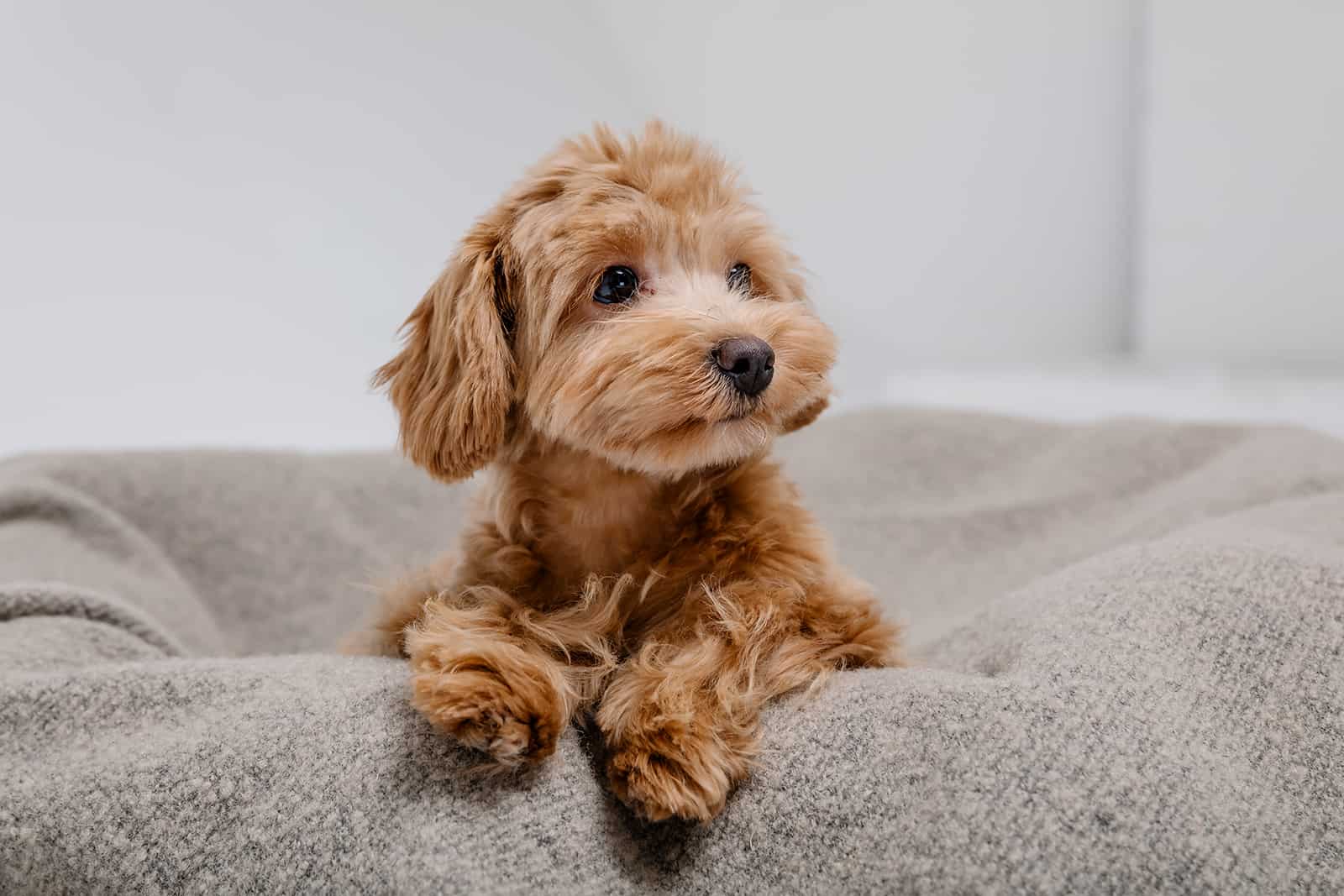
Similar to the Pomeranian’s colors of cream, you can expect the sheen of the cream Maltipoo to take your breath away!
After the sweet white Maltipoo, the cream Maltipoo is next in line when it comes to popularity, since it is such a common color among this adorable cross-breed.
When it comes to colored Maltipoos, you will rarely find a more popular coat shade.
The Apricot Maltipoo
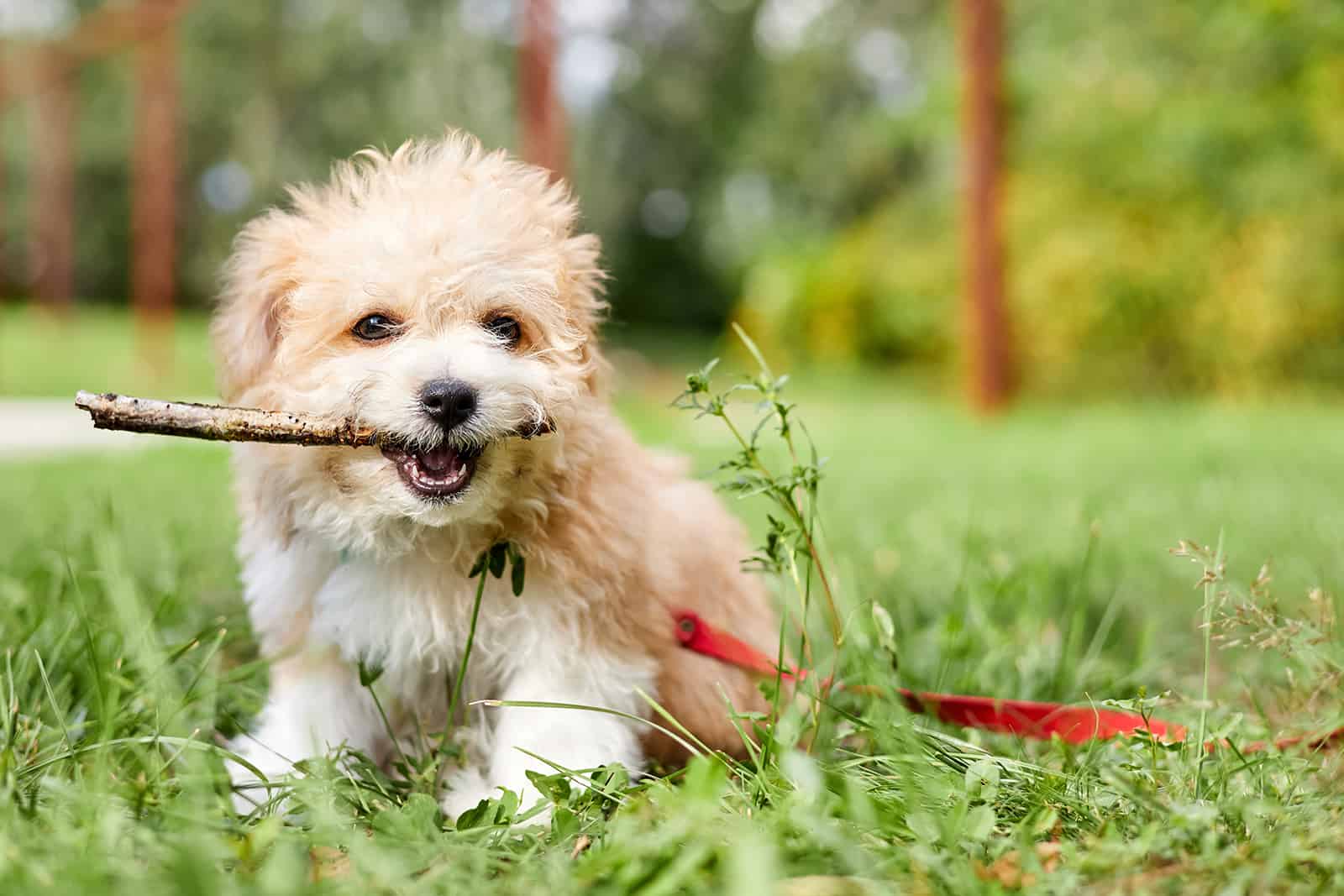
The Poodle is not the only ball of fluff that comes in the apricot color.
Even though this shade is not as popular as white or cream, it still remains pretty in-demand when it comes to different beautiful sheens—maybe because your Maltipoo looks like an adorable teddy-bear!
It is not surprising that people are crazy when it comes to these teddies with their cuteness overload. You might have to get on a waiting list to attain this beautiful pup.
The Red Maltipoo
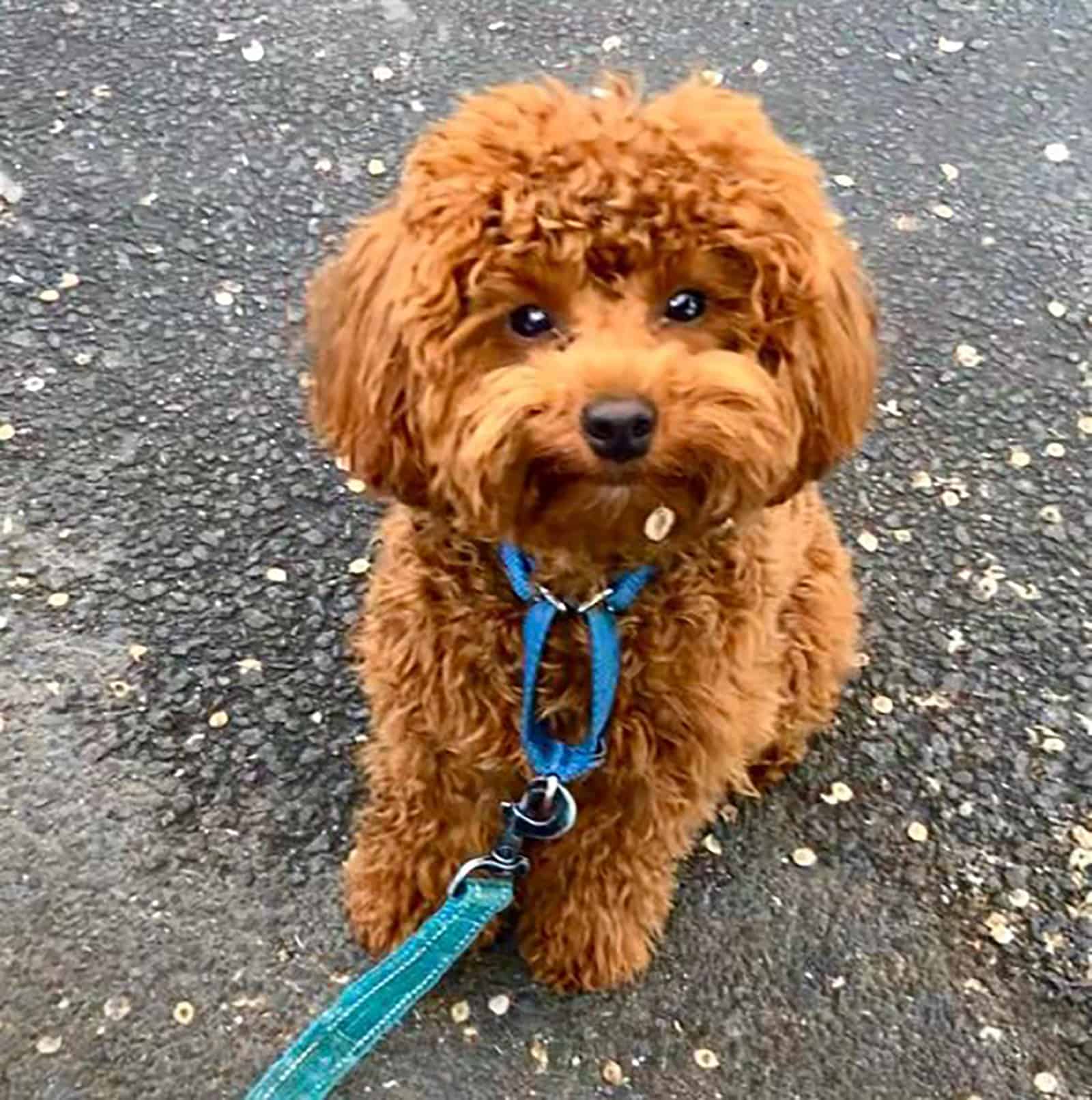
Photo from: @lilredmaltipoo
Like the Cockapoo, Maltipoos can come in the color red as well. The color red is similar to the color apricot, but the former has a richer and thicker appeal to it.
In order to have a red coat, the Maltipoo’s Poodle parent would have had to have one as well.
The red color might fade away as the Maltipoo grows older, reaching tones of apricot or even gold.
The Cafe Au Lait and Coffee Maltipoos

Photo from: @olive_fern_maltipoo
“Cafe Au Lait” is just another term for light brown Maltipoos—don’t let the name fool you; all of us like putting attractive names in front of things, and that’s okay.
These coffee-colored Maltipoos are a favorite among breeders who had given them this name in the first place. Their beautiful light coats contrast with their chocolate warm eyes; if they weren’t a puppy, they would be a delicious dessert!
The Coffee-Colored Maltipoo is the darker of the two brown colors–though neither of the two are exactly dark colors–they stick to the lighter side.
The Cafe Au Lait Maltipoo is basically the Coffee-Colored Maltipoo that is lighter—think “coffee with milk,” which is precisely what “Cafe Au Lait” means in French.
You will find the Cafe Au Lait more often than the Coffee-Colored Maltipoos just because lighter colors are more easily found in Maltipoos.
The Brown And Black Maltipoos
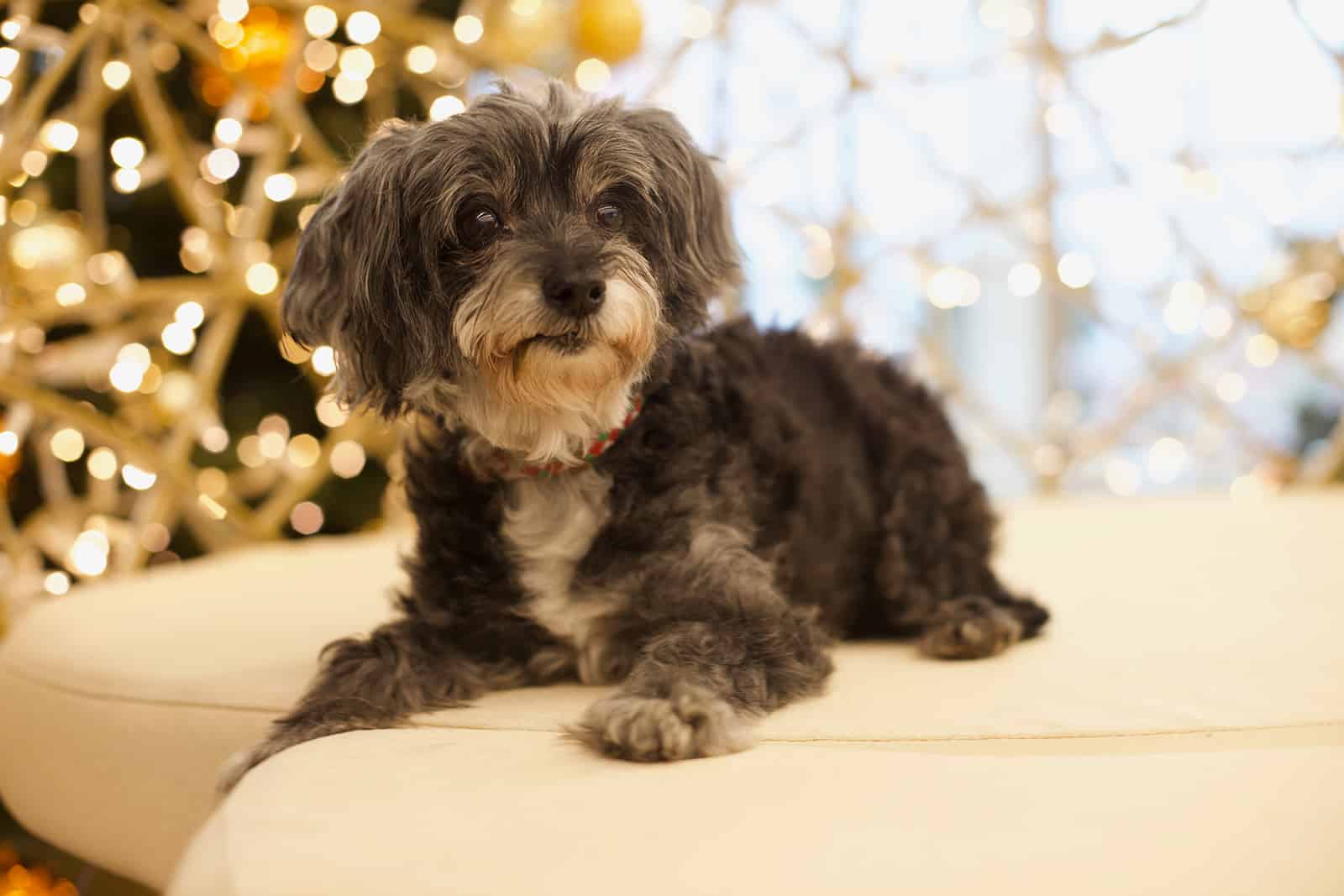
Brown (in the true sense of the word) and solid black are rare colors to come across in the Maltipoo world.
Sure, they exist, but not nearly as often as their lighter counterparts. The reason for this is that the Maltese parent breed in this cross-breed’s genes generally comes in lighter colors, like we have discussed above.
When it comes to the second parent of this cross-breed, their darker Poodle coats are removed from the breeding process of Maltipoos, or in the least, are usually quite diluted.
The Process For Breeding Darker Maltipoos
When it comes to breeding these darker Maltipoos, you have to know that the F1B (or multigenerational Maltipoos) generally are known for their darker shades because they have heavier Poodle genes.
What this means is that the F1B Maltipoos will be around seventy-five percent Poodle and twenty-five percent Maltese as opposed to the 50/50 you find in F1 (first generation) Maltipoos.
The F1 Maltipoo will consequently have lighter coats because of the higher percentage of Maltese genetics—and like we have said before, Maltese pups usually have lighter coat colors.
Luckily, if you are out for a F1B pup, they aren’t that hard to find because they are commonly bred for the simple reason that the F1B do not shed as much as their F1 counterparts.
The F1B does not shed nearly as much because of the non-shedding element found in Poodle genetics—and people generally love it when their dogs shed less, so breeders will always seek to optimize the genetics of their animals!
Therefore, if you are looking for a darker Maltipoo, try your luck with the F1B.
However, you also have to know that a solid black Maltipoo is quite unique because you would need the rarer black Poodle parent as well as the even rarer Maltese which carries the necessary genes to produce a fully black Maltipoo.
Such Maltipoos are rare and striking with their melting chocolate eyes and darker cute noses, but you will usually find streaks of white here and there with these pups as well.
The Parti Maltipoo
This is a unique looking Maltipoo that has two colors, where half of the Maltipoo’s fur is covered with white. Usually, a parti Maltipoo will have a white foundation and a mix of cream, apricot, brown, tan, or even black markings on its coat.
Such markings can be usually found on their backs or faces.
This Maltipoo is not very difficult to breed, since both the Maltese and Poodle parents may come in a variety of patterns, passing on their genetics to the offspring.
The Tri-Color Maltipoo
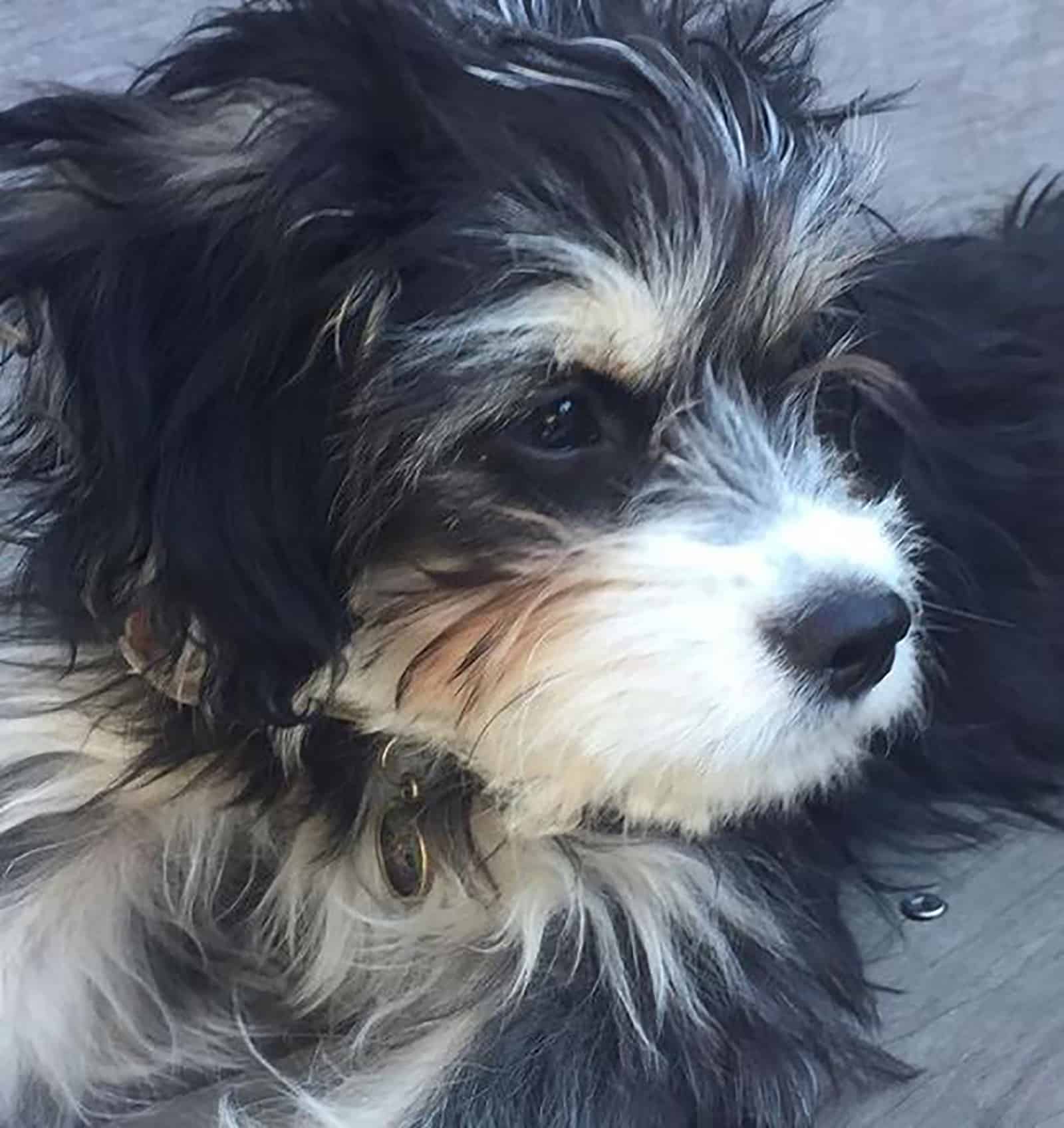
Photo from:@ruca_neacsu
This Maltipoo is more difficult to achieve than its parti-colored counterpart, even though they are very popular.
As the name suggests, this Maltipoo’s coat will have three different colors—usually a blend of white, apricot, cream, brown, tan, or black.
The darker colors are usually found around the head area (such as the ears or eyes) and on the back.
These colors might lighten as your Maltipoo ages. You might find that your once-black Maltipoo starts developing silver or gray hairs. Similarly, the brown Maltipoo might develop lighter golden or creamy shades.
The Sable Maltipoo

Photo from: @iamcocolatte
These are considered one of the rarest Maltipoos—but don’t worry, they aren’t Photoshopped, just really hard to find!
Such Maltipoos will usually have a solid foundation as a color with darker tips around certain areas of the body.
When they are young, they might appear like darker puppies, but if you push their fur around, you will notice that it actually has a lighter sheen.
The dark tips tend to fade away as these puppies grow older. Similarly, the fading gene that is sometimes found in Maltipoo dogs might express itself, and that beautiful color will start lightening once your Maltipoo reaches adult age.
The Phantom Maltipoo

Photo from: @tiffyg1991
Last on our list, we will mention another rare Maltipoo: the phantom.
These puppies are born with a specific pattern on their paws, chest, muzzle, eyes, legs, and so on. These markings are usually bi or tri-colored, making this puppy truly unique.
As opposed to other parti-colored pups, the phantom Maltipoo usually has a darker foundation with lighter markings. You might see a blend of colors such as tan, white, brown, gray, apricot, tan, or black.
Just like the sable Maltipoo, the phantom Maltipoo’s color might fade over time.
Which Color Should You Get?

You might be wondering whether color has anything to do with personality or health when it comes to the Maltipoo breed, and the answer is a simple no.
Because Maltipoo color has nothing to do with these very important characteristics when it comes to purchasing a dog that will fit you and your family members, it should definitely not be a primary factor when you are considering which dog you are going to get.
However, if you do find a dog with a color of your preference that is compatible with your lifestyle and dynamics, go for it! Just don’t pick a dog based solely on color though—that is not fair towards you nor Kujo over there!
If you believe that you can have it all, there is nothing wrong with that either.
You should then consider that certain coat colors are more popular than others and that you might or might not have to wait before the perfect dog with your preferred color is available for purchase.
We believe that no matter what kind of Maltipoo color you pick, if you choose a dog based on personality and lifestyle, you will find the dog of your dreams for years to come!
What Affects Health And Behavior If Not Maltipoo Color?

We understand that there might be certain stereotypes associated with color, such as that black dogs are “evil”—however, these notions can’t be further from the truth, and we must do our best to ignore these misconceptions that don’t help us nor our adorable furry friends.
If you want to know what truly affects dog behavior—from anything such as why your dog is obsessed with ball to why a younger dog might attack an older one—it all boils down to either genetics and/or proper training (such as socialization) in their puppyhood years.
Naturally, a puppy’s personality is highly important when it comes to behavior, so you should not ignore how your pup’s parents might behave, since your doggo’s first parents influence socialization.
You will find that regardless of coat color, every single pup out there has their own special traits that make them who they are. Some Maltipoos are naturally much more curious than others—and some might even be more adventurous!
Because of this, many reputable breeders will pay close attention to personality when they are breeding new Maltipoos and matching them with the owners that will be the perfect match for their puppies.
It is always best to match each pup to the perfect family so that everyone is happy!
The One Exception…
Even though it is exceptionally rare, the color merle in Maltipoos can be associated with certain health issues, such as eye disorders or even deafness.
These associations are usually stronger if two pups with the merle gene are paired when reproducing the next generation of puppies.
Regardless of this association, there are some breeders that specialize in producing merle Maltipoos. This is not necessarily horrible, because association does not have to mean causation!
However, if you are bent on finding a merle Maltipoo, make sure to find an ethical breeder whose priorities are aligned with ensuring what is the best for the next generation of puppies.
Such a breeder will go through different DNA testing to ensure the best outcome.
Read Also: 8 Best Maltipoo Breeders In Ontario
Do Maltipoo Puppies Change Color?
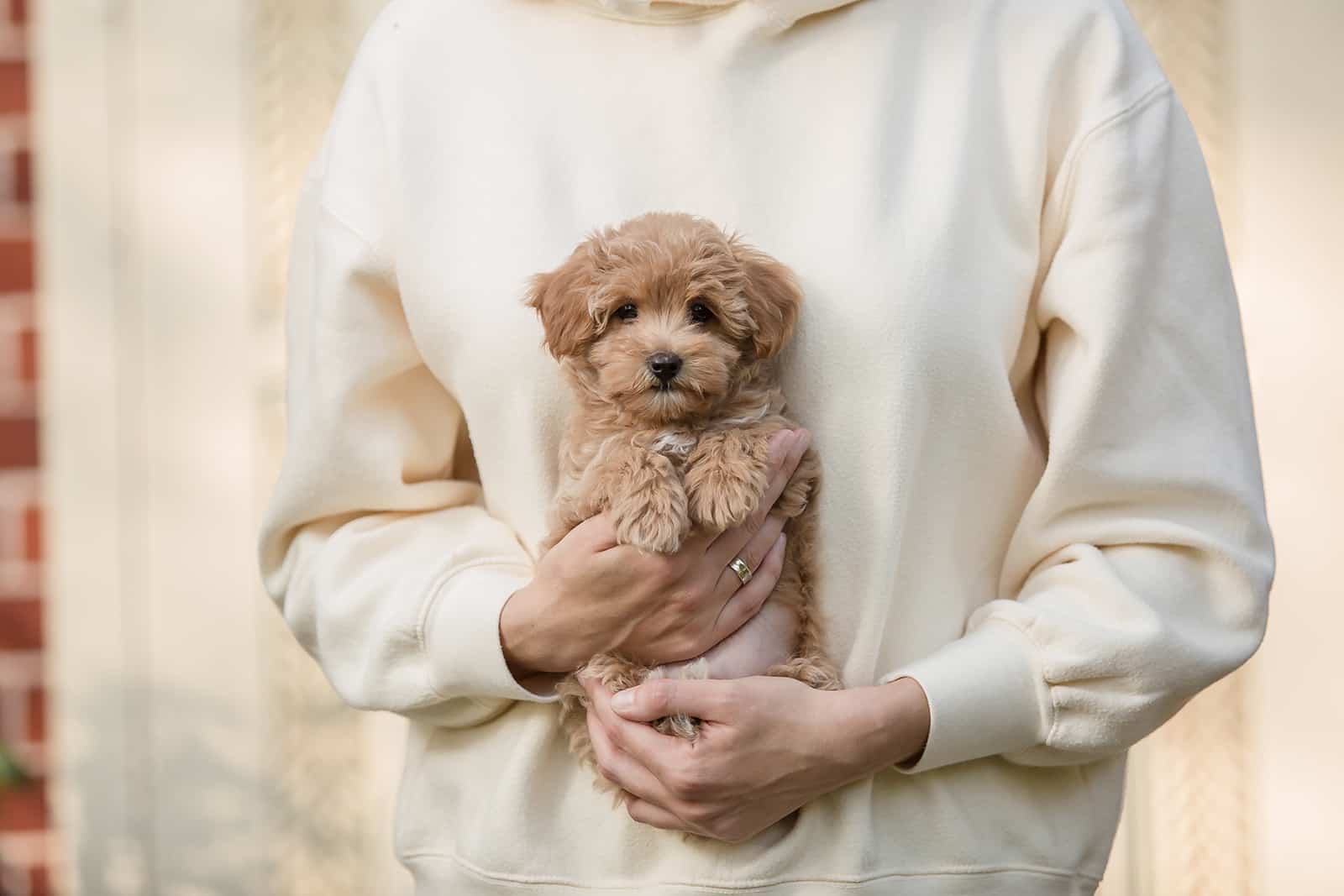
This might be a funny one, considering that it is not common, but there is a possibility that your Maltipoo might change color.
The Doodle family sometimes receive a certain gene that is responsible for gray fur. This is inherited from the Poodle parent.
This gene—also known as the fading gene—expresses itself in such a way that the puppy’s fur might become lighter as they grow with age.
Unsurprisingly, dark-colored Maltipoos are more likely to start expressing this gene if they have it. Because of this, you might find the rare black Maltipoo fading over time into colors of silver or gray or the brown Maltipoo becoming cream.
If the red Maltipoo inherits this gene, it might start moving into apricot tones, whereas naturally apricot Maltipoos might start becoming cream. The cream Maltipoo may even become white over time if it expresses the fading gene!
You can’t do anything to stop this gene from expressing itself; but if you are very interested in discovering whether or not your Maltipoo has this gene, you might want to ask your breeder about genetic testing.
They might be able to tell you whether or not the fading gene is present in your puppy.
The great thing about white Maltipoos is that if they become discolored, all you have to think about is giving it a bath! It most likely has become dirty due to dust or eye boogers!
Coat Shade And Grooming
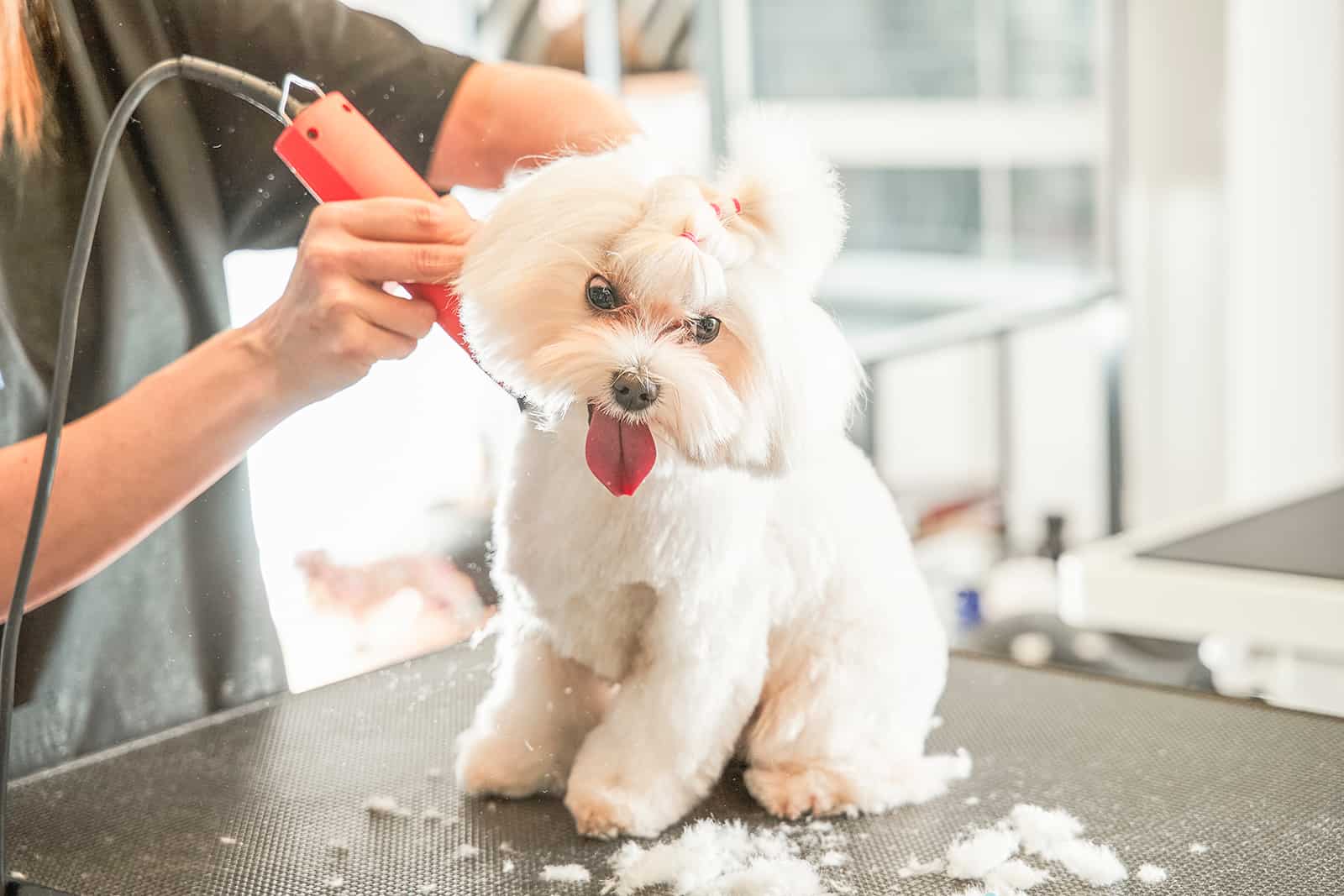
You might be wondering whether Maltipoo color has anything to do with coat type or grooming specifically.
The great thing to know is that there is not a huge difference between colors when it comes to coat softness or type. This means that you can have a white or a black Maltipoo with the exact same fur texture and type.
What might affect coat type is how curly your Maltipoo is depending on the strength of its Poodle gene. The curlier your Maltipoo is, the greater the chance that it won’t shed!
However, you might want to pay extra attention to the lighter Maltipoos since their fur is more likely to stain in comparison with their darker siblings.
It will most likely stain in places where moisture is present, which means that the fur around the mouth, butt, and eyes is more likely to stain when compared to, let’s say, the back.
Such staining might even cause a Maltipoo to smell pretty horrible, so take care of your pup’s hygiene!
What To Do…
If you want to take care of darker stains around the eyes, think about mini-grooming your Maltipoo more frequently. It is quite known that both Poodles and Maltese dogs stain easily around the eyes.
However, there is no reason to fret. Nothing that a little bit of tear stain remover won’t fix! Just make sure you don’t leave on the solution for too long because it might cause the fur to mat.
Additionally, dark staining may be nearly impossible to wash away, so err with caution!
You can trim the area around your Maltipoo’s butt to make sure that moisture does not cling onto that area and attract darker stains, especially considering the fact that a younger Maltipoo might poo several times a day.
Groom Your Maltipoo For A Teddy Bear Look
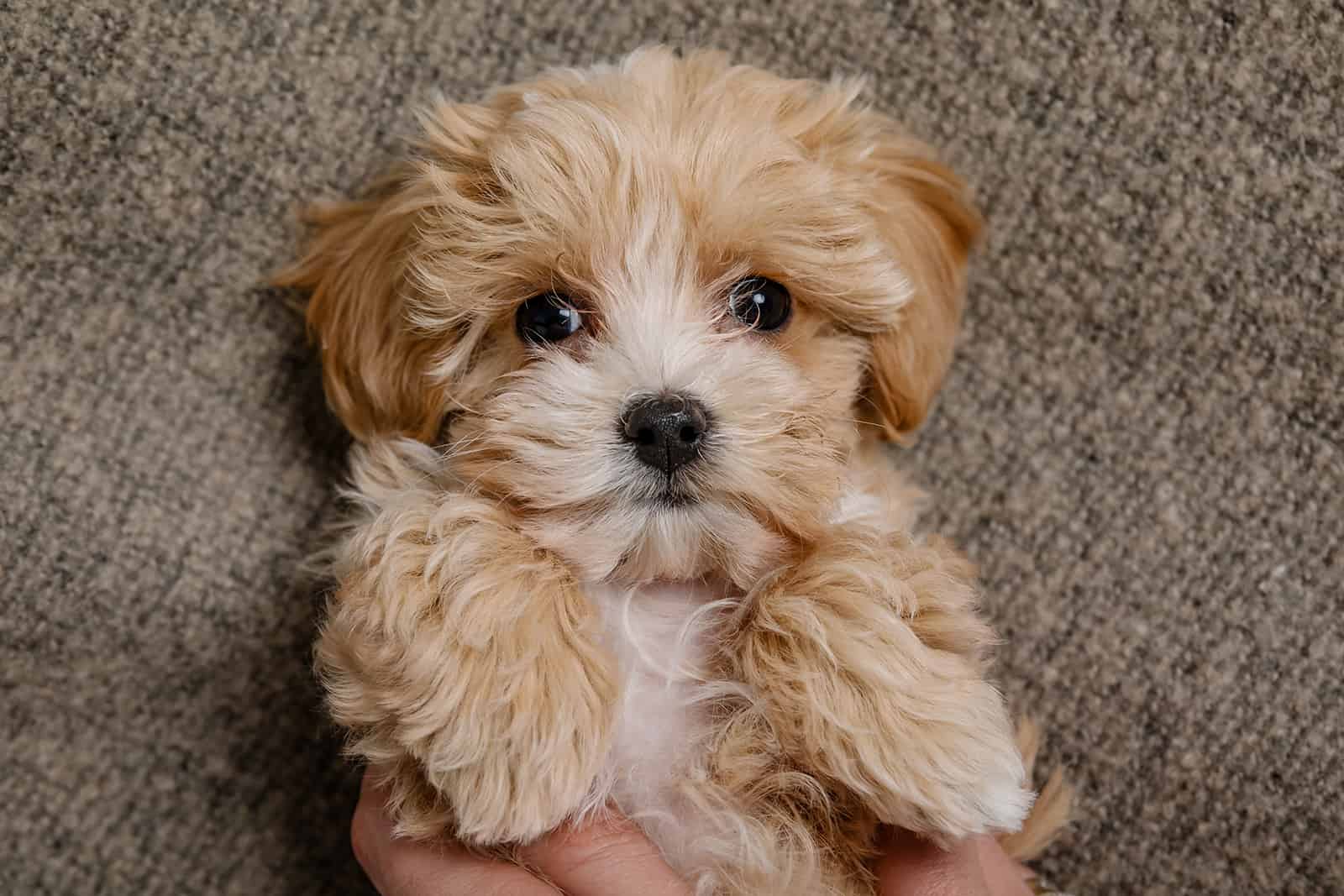
If you want to show off your Maltipoo’s gorgeous color, there is no better way to do it with the teddy bear haircut that Maltipoos are known to look great in!
Before you cut your Maltipoo’s hair, we suggest you bathe and brush your Maltipoo for a clean and luscious look.
Make sure to get an appropriate shampoo and brush that won’t aggravate your pup’s skin and fur.
Then, you will want to follow these next steps:
1. First use scissors that are not very sharp to cut the nose hair into the shape of a pyramid (you don’t want to use sharp scissors and end up hurting your puppy!)
2. Then you will want to round the facial hair as much as you can
3. Trim the facial hair so your pup does not end up with a beard!
Conclusion: Maltipoo Colors
You have learned that this dog breed is truly unique when it comes to its myriad of beautiful colors.
It might not be a toy Poodle, Labradoodle, or Retriever, but it has a special charm of its own on the color spectrum, just like every single breed out there.
You might be tempted to get a specific dog because of its colors, but make sure that you look at other factors like health and personality, which will definitely affect your lifestyle.
There is nothing wrong with wanting a Maltipoo with a certain color—just make sure that isn’t the only reason you are interested in one!
We hope that you have learned everything you wanted to know about Maltipoo colors. Good luck with your dog search for a Maltipoo best friend using everything you have learned!
Read Next:
• 6 Lagotto Romagnolo Colors And Color Combinations All In One Place
• Top Maltipoo And Teacup Maltipoo Breeders From USA!
• 7 Best Maltipoo Breeders In Toronto, Canada















